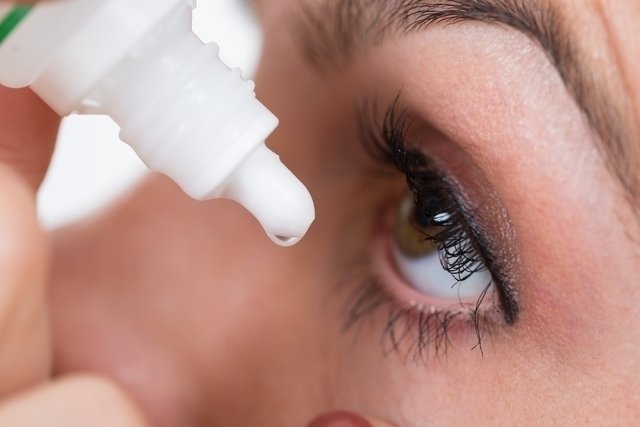Bimatoprost eye drops are indicated for the treatment of glaucoma and should be used daily to reduce high pressure inside the eye. This eye drop can be sold in its generic form but can also be found under the trade names Latisse or Lumigan, for example.
Glaucoma is an eye disease where pressure is high, which can damage vision and even cause blindness when left untreated. Its treatment must be indicated by an ophthalmologist and is usually done with a combination of medication and eye surgery. Currently, with minimally invasive surgeries, surgical treatment is indicated even in early cases of glaucoma or cases of ocular hypertension. Understand better what glaucoma is, symptoms and treatment.

What is it for
Bimatoprost eye drops are indicated to reduce increased eye pressure in people with open or closed angle glaucoma and also in cases of ocular hypertension.
How to use
To use bimatoprost eye drops, simply apply 1 drop to each eye at night. In cases where it is necessary to use other eye drops, you must wait 5 minutes before adding other medications.
When using contact lenses, they must be removed before putting the eye drops in the eye and the lens must only be reinserted 15 minutes after using the eye drops.
When putting the drops in your eyes, it is important to be careful not to touch the packaging to your eyes to avoid contamination.
Possible side effects
The most common side effects of generic Bimatoprost eye drops are the appearance of a slight blurring of vision shortly after applying the product and this can impair the use of machines and driving vehicles. Other effects include eye redness, eyelash growth, and itchy eyes. Sensation of dry eyes, burning, pain in the eyes, blurred vision, inflammation of the cornea and eyelids.
Who shouldn’t use
This eye drops should not be used if you are allergic to bimatoprost or any of the components in its formula. It should also be avoided in cases where the eye has uveitis (a type of eye inflammation), although it is not an absolute contraindication.

Sign up for our newsletter and stay up to date with exclusive news
that can transform your routine!
Warning: Undefined array key "title" in /home/storelat/public_html/wp-content/plugins/link-whisper-premium/templates/frontend/related-posts.php on line 12
Warning: Undefined array key "title_tag" in /home/storelat/public_html/wp-content/plugins/link-whisper-premium/templates/frontend/related-posts.php on line 13



